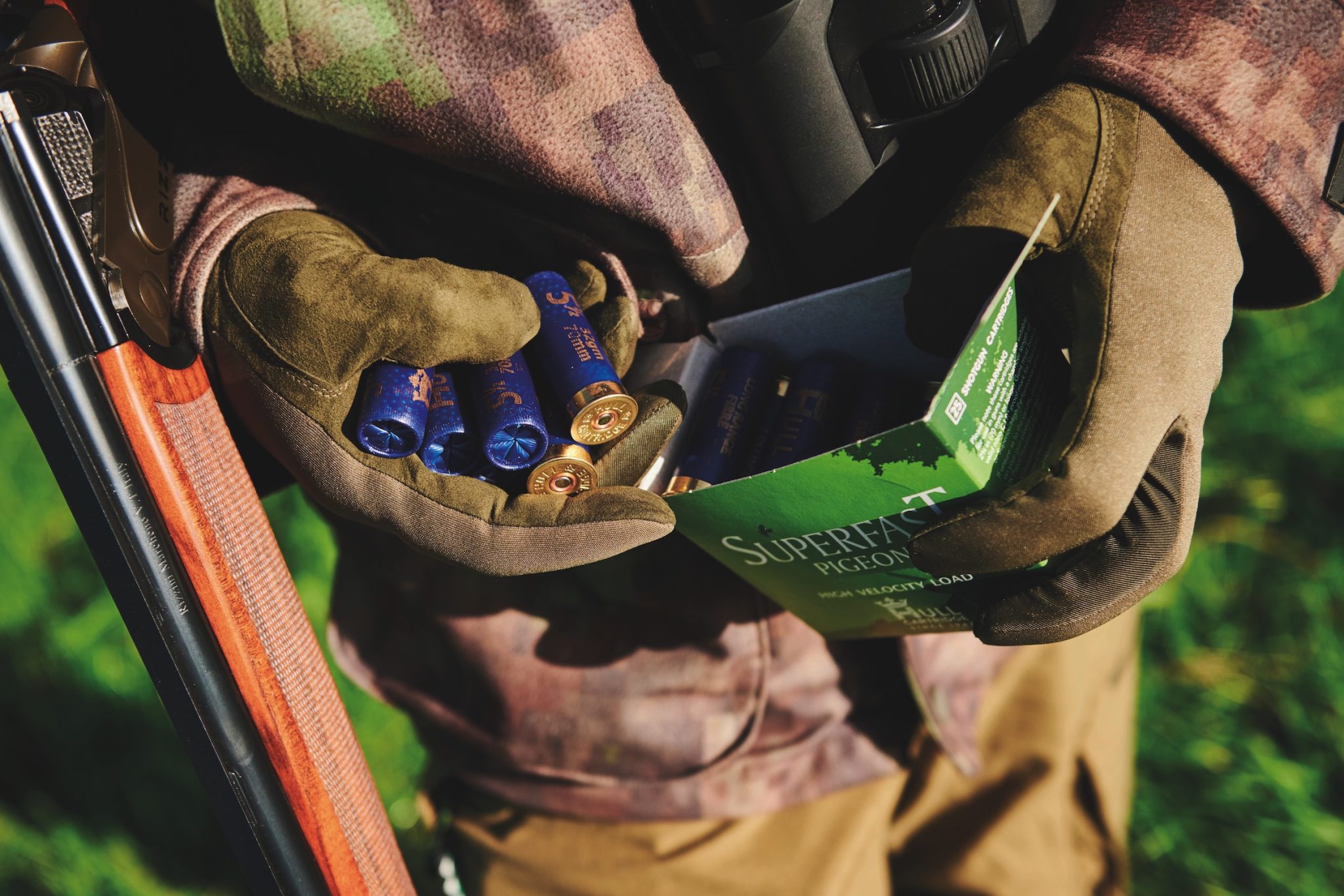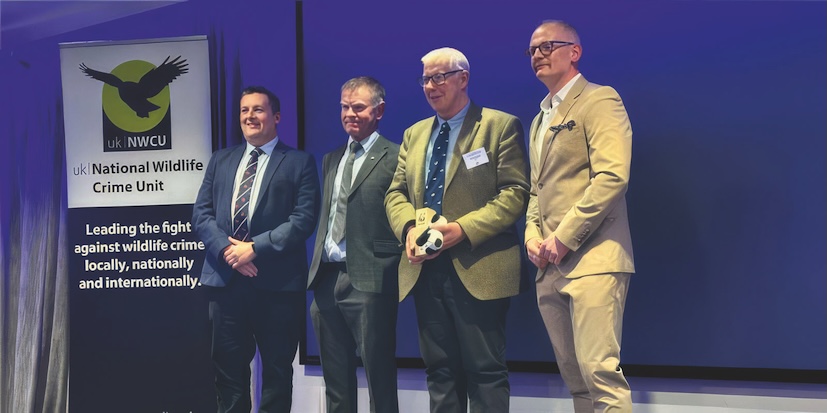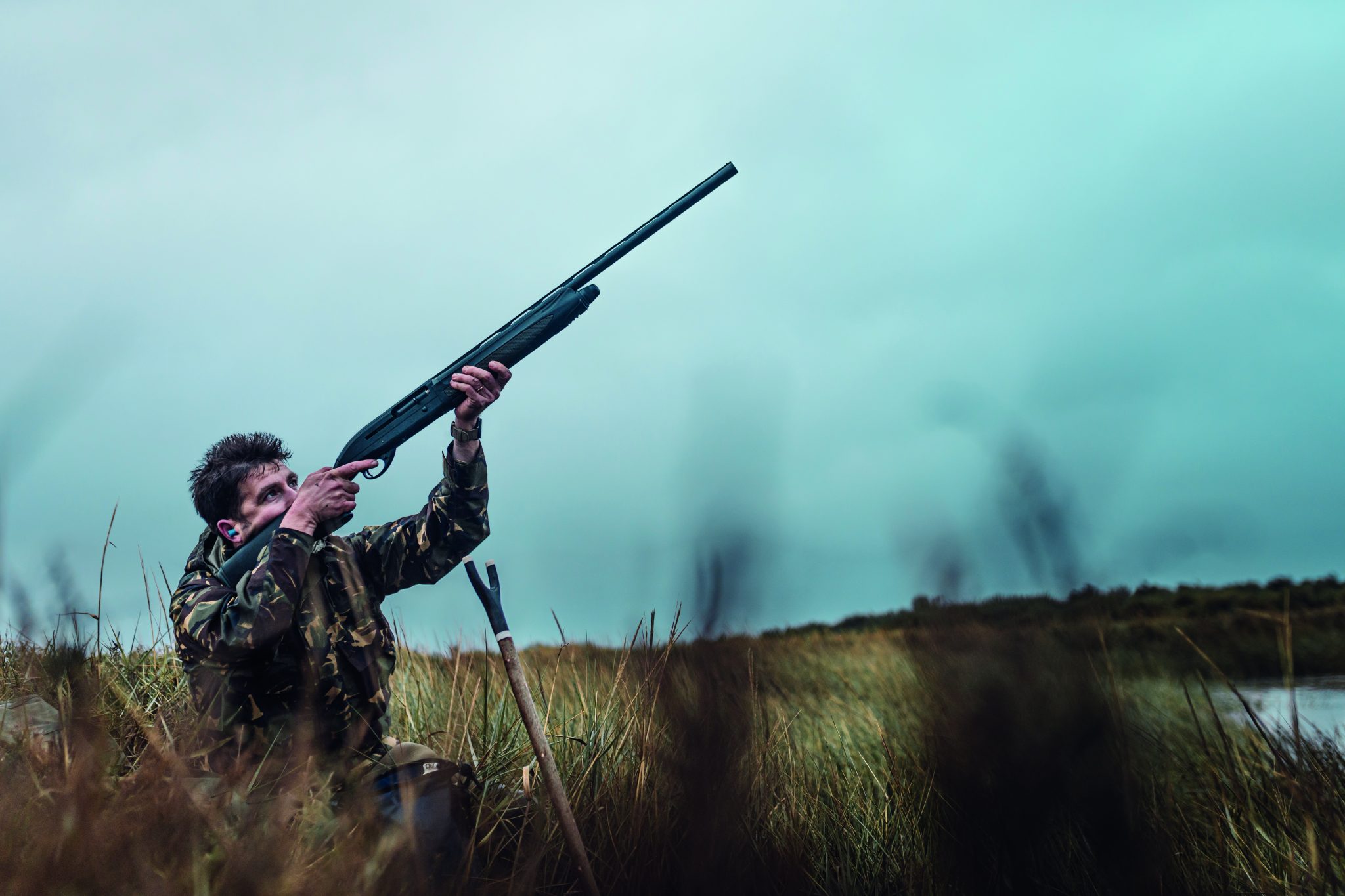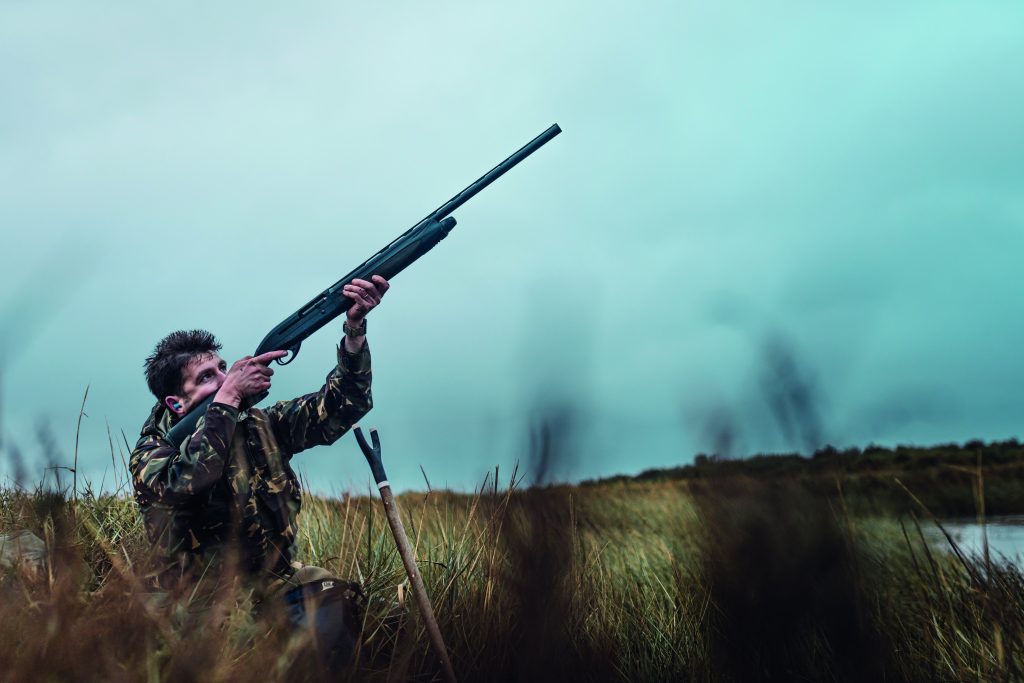Win CENS ProFlex DX5 earplugs worth £1,149 – enter here
Life, full and a half
<strong>A tribute to the life of John Humphreys</strong>
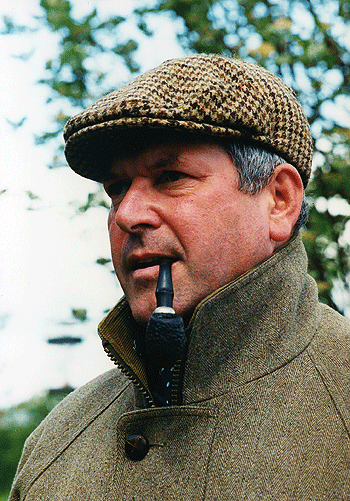
On 7 February, with the sad death of John Humphreys, after a courageous but fortunately not prolonged battle against cancer, the world of shooting, fishing and all country pursuits lost one of the greats. He touched so many people, whether as a friend, reader or casual acquaintance, be it at the Game Fair, a shoot, the riverbank or deep in the fenland reeds. His friendly manner enabled him to connect immediately with all he met across the whole strata of life, and each was made to feel a special individual; a rare talent. He was an enthusiast and great ambassador for the countryside, its people, ethics and sports.
John Humphreys was born in 1939, the eldest son of a vicar of a small Cambridgeshire village and Canon of Ely Cathedral. He grew up with the freedom to explore the farms and fens around his home. The countryside was his classroom and the playground so formative in his youth. One of John?s most inspiring experiences, when in his teens, was a bird-ringing holiday to Northumberland. There he met Dr Eric Ennion, a renowned ornithologist and artist, who became a mentor to the young naturalist hunter.
John was at school in Cambridge and Soham, then Worcester College and Loughborough University, graduating in 1961. Later he took an advanced diploma in education at Cambridge University and an MEd at Leicester University. In his early years he played rugby for the Eastern Counties and was Universities Athletics Union (UAU) light heavyweight boxing champion in 1960. Not only a sportsman, he was also a keen actor appearing in roles from Shakespearean drama to My Fair Lady.
His successful teaching profession led him, via Berkshire and Rutland, back to Bottisham Village College, in Cambridgeshire, where he rose from deputy head to acting warden before taking early retirement in 1993. He was an inspiring teacher, noticing the good in people. There are many examples of his former pupils who freely acknowledge John for moments which changed their lives. Some years before retiring, John would select a group of pupils he felt deserving of a trip to my carp lake at the end of summer term. Those boys who perhaps never found themselves worthy of academic reward, really rose to the occasion. It gave them self-esteem which carried them forward in life.
As a schoolmaster, John had sound advice to parents concerning teenagers: ?Keep them busy and occupied so they don?t have time to get into trouble.?
So Bottisham became his home where he settled with his wife, Angela, so well- known for her successful books on game and country cooking. They had two sons, David and Peter, of whom John was so proud, and later two grandchildren, Max and Madeline. He was thrilled to watch them all grow up to embrace his passion and love of fishing and shooting. One of his last and happiest moments was when father, sons and grandson all caught salmon on the same day on the Tweed ? what a triumph and joy.
John was a man of many talents. He had a great love of Dixieland jazz, not just listening to it, but playing his trumpet with the best of them ? Louis Armstrong was his hero. Not only did John bring the room alive with the trumpet, but the gravid voice of ?Satch? was his style. His band, the Amadeus Boldwicket?s Red Hot Peppers Jazz Band, played at pubs, weddings, funerals and waterside taverns on annual boating holidays on the Broads. Their music always fitted the mood.
Lords? Ground, a farm in the fens where John started a shoot with a few friends, produced little sport in the first season. However, as with anything he organised, he inspired a vision and camaraderie. Within a few years, with much hard work, game flourished. The project was a worthy winner of a Laurent Perrier Award in 1995. It was a tribute to all involved, but to John the most important element was the fun that was had. The bag was never as important as the spirit of those who shared the day.
Adjacent to Lords? Ground was a small patch of forgotten marsh at the road?s end set against the riverbank. No more than eight acres, this became John?s ?Hunter?s Fen?. It was his favourite spot on earth. He cherished every plant, reed, nest and splash. He created ponds which he fed to welcome a few mallard and on a windy evening in the winter, a special friend would be honoured with an invitation to this inner sanctum of John?s sporting temple. He created that special stage on which each of nature?s players performed until the curtain of darkness fell. In 1990 Hunter?s Fen was highly commended in the Laurent Perrier Awards.
His attitude towards a day?s sport developed into The Country Sportsman?s Record Book and Journal, a gamebook he designed and first published in 1988. Well-illustrated by his friend, John Paley, the left-hand page had three columns for ?Date and Place?, ?My Companions? and ?The Bag?. The whole right hand page was devoted to ?Remarks?. In the foreword he pointed out that two
pheasants in the game column one November are no different from two pheasants in the column a year later. What is relevant is the manner in which each may have been accounted. The weather, dogs, friends, jokes, sightings of unusual wildlife; the myriad of special elements and moments made the day. A point well made.
As a writer he was a master. For 40 years John Humphreys wrote for Shooting Times, much of that time as Country Gun but also as a feature writer. If ever there is a legendary figure for this magazine, it is John. He also wrote for The Field, Country Life and American sporting titles but it was in Shooting Times that he felt most at home with the readers.
There are lessons for us all in John?s writing and in life. He wrote to you, the reader, personally as if in a letter. We all connected with him; sometimes it was almost as if he was whispering a secret. John had the knack of sharing such treasures we all wanted to know.
Like any good storyteller, a small incident became a captivating tale. John would laugh when I referred to him as a ?master of sporting fiction?, but that only came from admiration and respect for his talent. He was always quick to compliment and acknowledge the good in others.
John wrote over 20 books on sport and the countryside, notably Poachers? Tales, The Countryman?s Year and Hunter?s Fen which later became Days and Nights on Hunter?s Fen. This is a classic in many ways. It is a book straight from the heart by a man who links the eras of fenland life. His stories are first-hand from old fowlers, eel catchers, poachers and those who toiled in all weathers on the black fen soil. Now those men have gone. John captured those times with evocative realism. Some passages are pure poetry and if ever a book was the man, Hunter?s Fen was John Humphreys. No wonder he considered it, in his own modest way, his best.
You can hear his voice in every phrase. He wrote with economy yet with the most evocative use of adjectives to bring a mental picture alive. ?It?s the sizzle that sells the sausage,? he used to tell me. Readers are there by John?s side, out on the fenland marsh.
Amazingly, John never held a passport until he retired. For years he disapproved of travel abroad since he felt the British Isles had all the landscape, sport and climate anyone should ever want. Having retired, however, time and opportunity finally led to the cutting of this umbilical cord to mother England. In later years, sport and journalism took him to many corners of the world opening up a host of experiences and new friendships.
Talking of friendships, dear John was just that to me over more than 40 seasons. We found a good excuse to set off on many sporting ventures. We spent summer evenings casting to wary trout until the last rays of sun caught the wisp of smoke from John?s pipe. One such evening he came to my beloved acres of Hauxton and we fished until we heard the honking of approaching geese. Then, discarding rods, we unsleeved our guns and hunkered down in the reeds. The result was a triumphant return to respective homes with fish and fowl for a feast. But that experience was nothing to compare with an evening with John in the fens, flighting duck as mysterious as the tundra from where they made their autumnal migration. In water and reed with dog and gun, John was at one with the world.
Often we shared a pigeon hide, all memorable days putting the world to rights and enjoying sport. We walked up grouse on the Pennine moor which John shared for a good number of years with a hearty gang of mates. We shot clays at Sam Grice?s Friday afternoon club. We shot our old hammerguns once a year with a party of enthusiasts. We went birding on the coast of North Norfolk. As ?twitchers? for a day we found one hundred species ? possibly more, but neither of us with our shot-out ears could hear the finer twitters in the reeds about us. Our midlife crisis took us harmlessly to a squash court every Monday evening ? we were better at the beer afterwards.
At one time we both had young Labradors ? my ?Dunton? and John?s ?Satch? were the future of our sporting lives and we were really quite competitive in the Cambridgeshire Game Conservancy (as it then was) Rod and Dog day. Where our amateur dog training failed our fly rods had to make up.
John would come to my small shoot at Hauxton each season and he wrote a most wonderful page as a foreword for my own book Will?s Shoot ? the best page in the book. It was a joy for me and all involved to see John shoot so well with us in mid-November last season. I believe it was his last day out as his health sadly declined in the weeks after.
On one of my last visits to him in the Bottisham Hospice, I smuggled in a cock teal in the pocket of my shooting coat. With a smile, he tenderly stroked it and with a tremor in his voice said he thought he?d never handle one again. I urged him to pluck a speculum feather from the wing. It glittered emerald green as he twisted it between his fingers.
John is now gone but like all countrymen he was a realist about life and death; it is part of life. We will all miss him but he will live on in our hearts and minds. His writings are a legacy for those who come after and share his passion for the countryside, its sports and its wildlife.
Related Articles
Get the latest news delivered direct to your door
Subscribe to Shooting Times & Country
Discover the ultimate companion for field sports enthusiasts with Shooting Times & Country Magazine, the UK’s leading weekly publication that has been at the forefront of shooting culture since 1882. Subscribers gain access to expert tips, comprehensive gear reviews, seasonal advice and a vibrant community of like-minded shooters.
Save on shop price when you subscribe with weekly issues featuring in-depth articles on gundog training, exclusive member offers and access to the digital back issue library. A Shooting Times & Country subscription is more than a magazine, don’t just read about the countryside; immerse yourself in its most authoritative and engaging publication.



